Arbroath's secret sea caves – explored by kayak

THE seaside town of Arbroath, in Angus, has a rich and intriguing history. It is most well-known for being the location of the signing of Scotland’s Declaration Of Independence in 1320, and foodies will know it as the home of the famed Arbroath smokie.
Having moved to the town in 2018, I am still learning about its history, so when the opportunity came up for me to explore the town’s ancient cliffs and sea caves – by kayak, no less – I jumped at the chance.
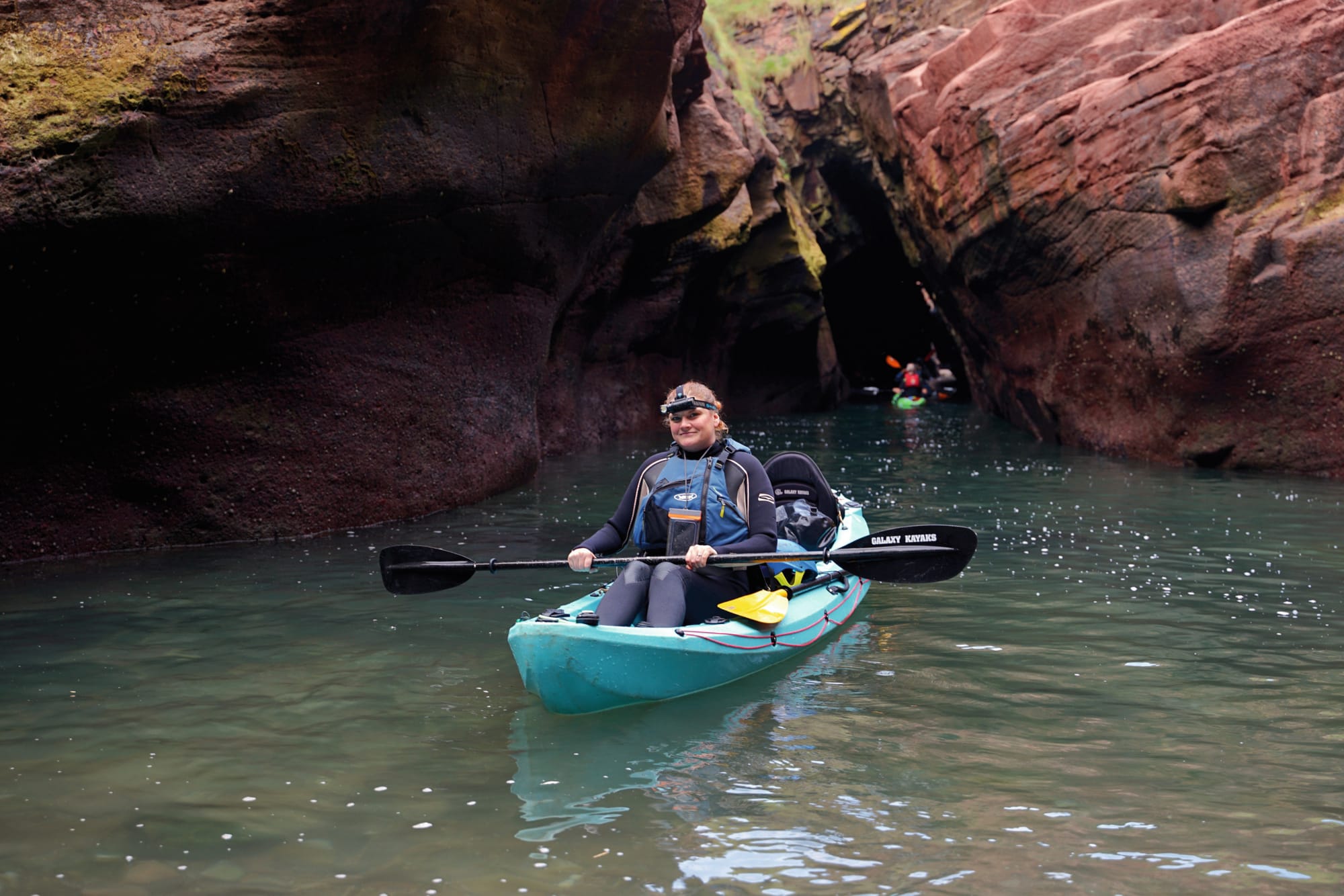
Discovering Arbroath Cliff Tours
I had been aware of Arbroath Cliff Tours for a while, but I had never gathered enough courage to take the plunge and book myself onto one of the tours – until now.
Local Cameron Smith started the coastal tours during lockdown when his previous job as a wedding guitarist came to a halt. He had grown up exploring the area and had been kayaking for years, when one day someone asked to be shown the caves.
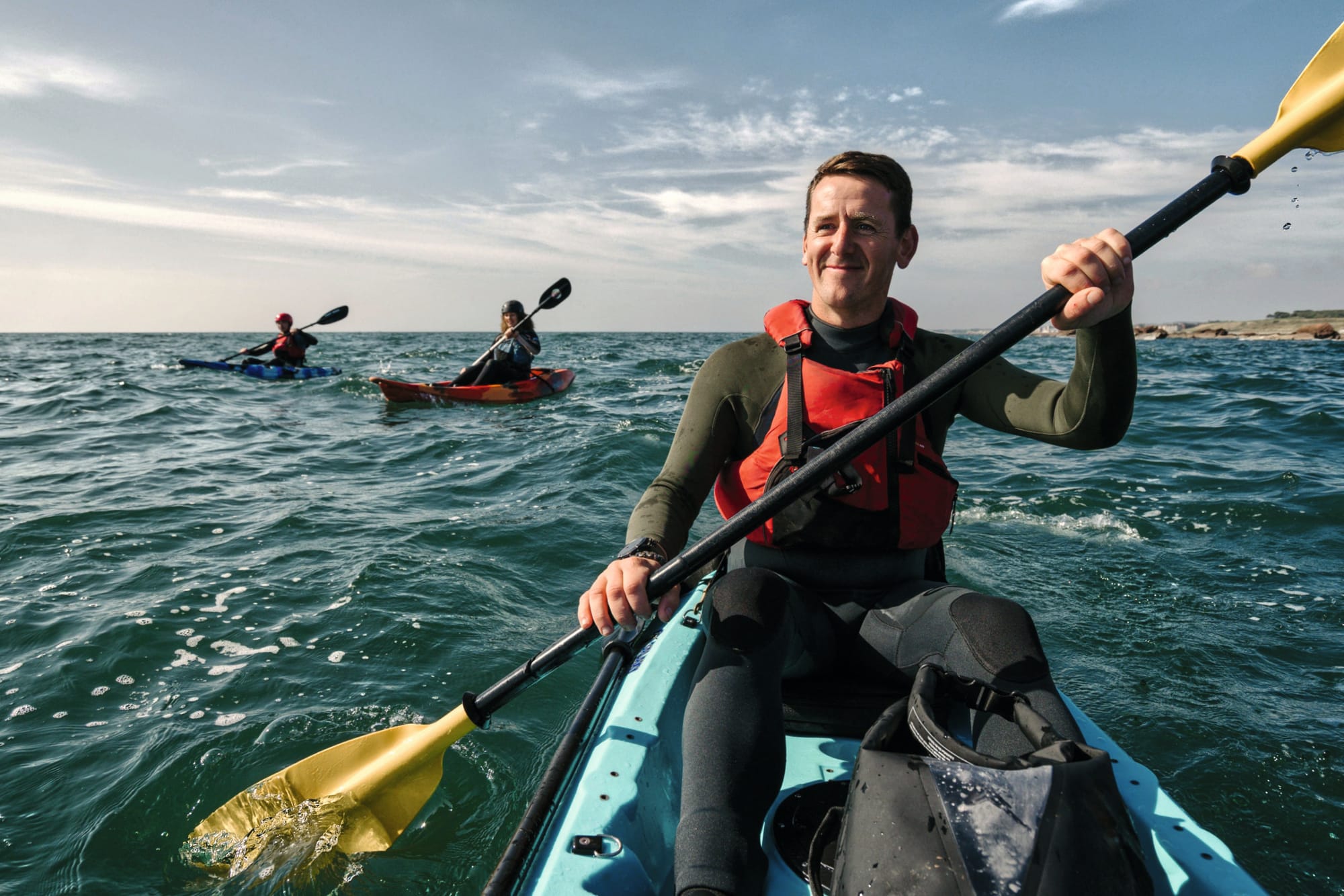
“I started kayaking 15 years ago and have kayaked in many countries around the world. The Arbroath cliffs is still my favourite,” Cam told me.
He posted photos of this on social media and received over 50 messages from other people asking to be shown the caves – and the rest is history.
More Than Just Kayak Tours
As well as kayak tours, Cam offers swimming tours around the cliffs and caves, plus two walking tours: a shorter one visiting a popular cave close to the starting point and a longer one going all the way to Auchmithie, further along the coast.
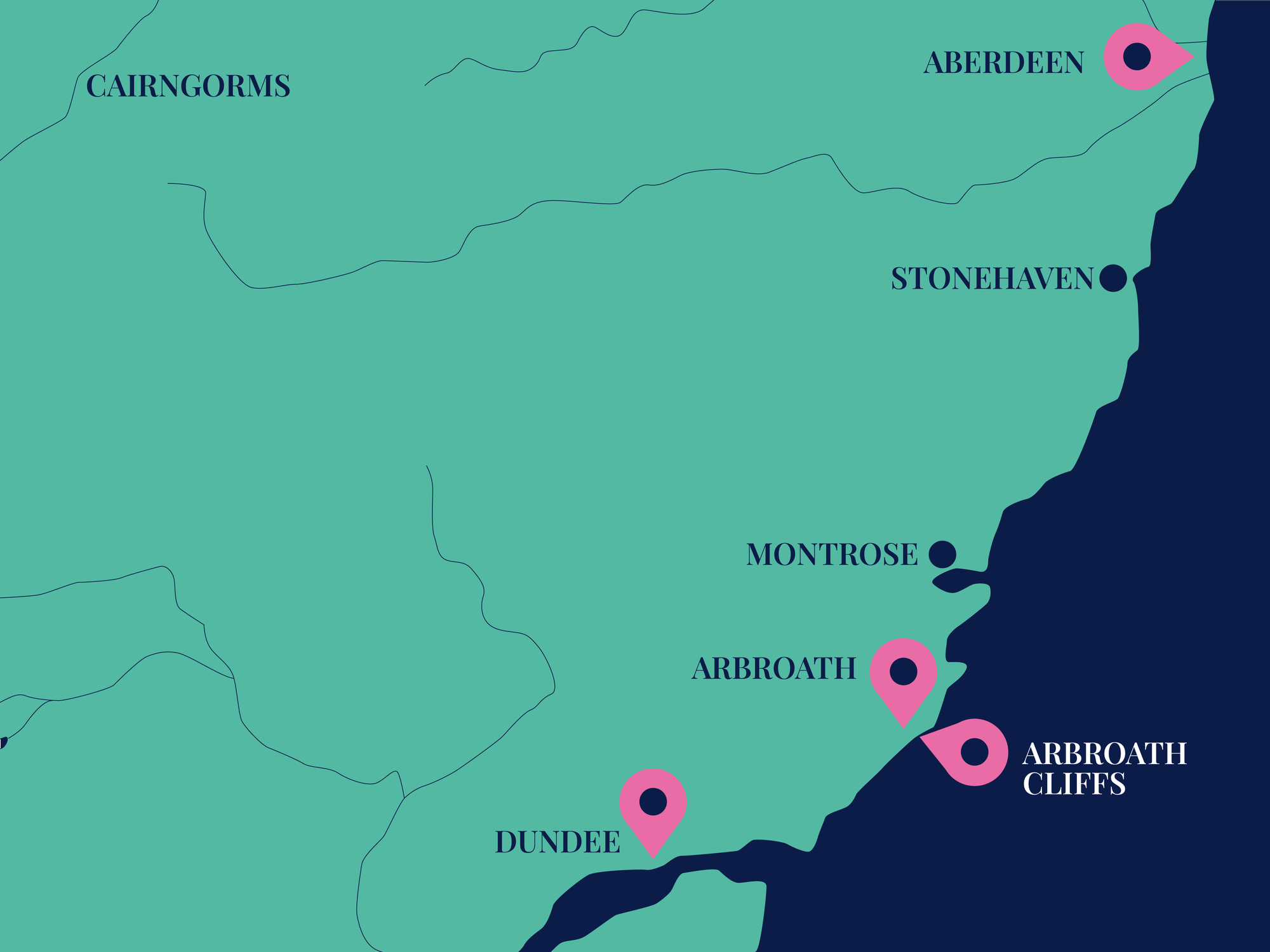
I arrived at the meeting point at the start of the cliffs at 5.45am. This meant I was starting my day quite a bit earlier than I am used to, but the tides dictate the times of Cam’s tours, as everyone’s safety is his priority.
It was a beautiful morning: there wasn’t a cloud in the sky and the sea was calm with no swell. The sun had not long peeped over the horizon, promising a warm day ahead, and we couldn’t wait to get out on the water.
Early morning start for perfect conditions
I was one of five people going on this kayak tour, using two two-person kayaks and two single kayaks. I was to be in one of the two-person ones, sitting in front of Cam, which was reassuring, as although I have kayaked before, I lacked experience and confidence.
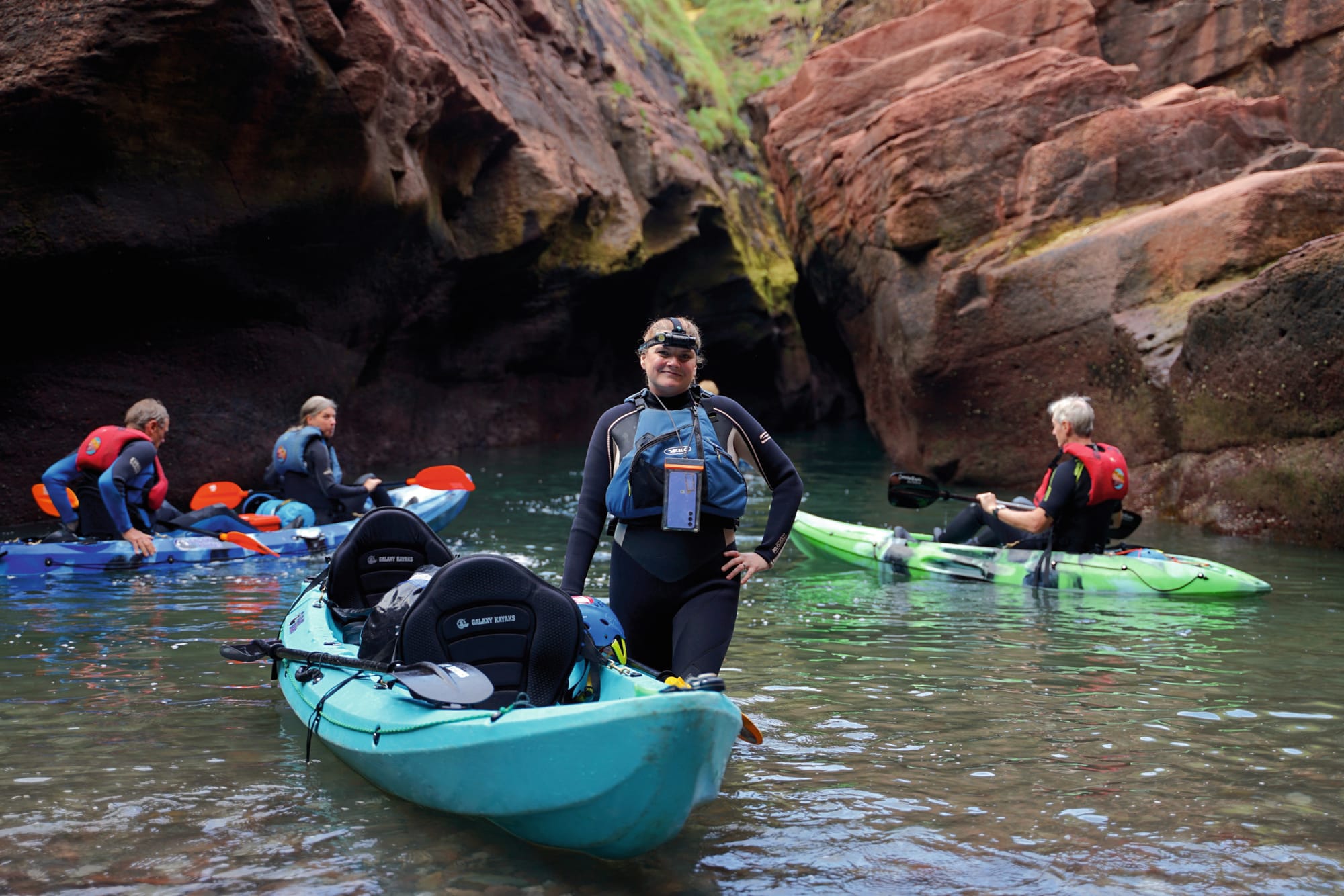
Cam provided me with everything I needed for the experience, including wetsuit, boots, life vest and a head torch, which we would need once we were inside the caves.
He talked us through everything we needed to know before we set off, and his passion for his job, and the cliffs, was evident from the start.
Once we were all kitted out, it was time to descend the steps with the kayaks and get our feet wet – the adventure was about to begin!
Safety first on the North Sea
As a volunteer member of the Arbroath RNLI Lifeboat crew, Cam knows better than most that the North Sea and these cliffs are not without their dangers.
“For water sports or swimmers, the greatest danger is the sea swell,” he warned. “I’ve run more than 600 kayak trips and have had a few minor incidents (kayak tips, people panicking) – most of these due to the swell.

"Always make sure to check the swell report beforehand and never enter a cave if the swell is two feet or above.”
Once we were safely in our kayaks in the shadow of the huge sandstone cliff, Cam explained how the cliffs were comprised of two different types of rock that were, unbelievably, millions of years apart in age.
Geology of Arbroath Cliffs
“The bottom layer is 410-million-year-old lower Devonian sandstones,” he told me.
“The top layer is 370-million-year-old upper Devonian conglomerates and sandstones. There is a 40-million-year time gap between the two types of rock.”
We began paddling and were soon out in the North Sea, which was perfectly calm on this beautiful morning.

Cam was extremely knowledgeable about the seabirds we encountered – seagulls, cormorants, shags, razorbills and guillemots – either perched on rocks, swimming or flying beside us, and it was fascinating to see and learn about them in their natural habitat.
Exploring the sea caves
We then headed for the first cave of the tour, switching on our head torches as we entered. One by one, we paddled through the opening of the cave, continuing until we reached a rocky bay area, where we jumped out of our kayaks and came ashore.
Being deep inside these ancient cliffs was exhilarating, surrounded by the enveloping darkness, walking on the beautiful stones under glistening walls worn smooth by the North Sea over millions of years. It was hard to fathom.
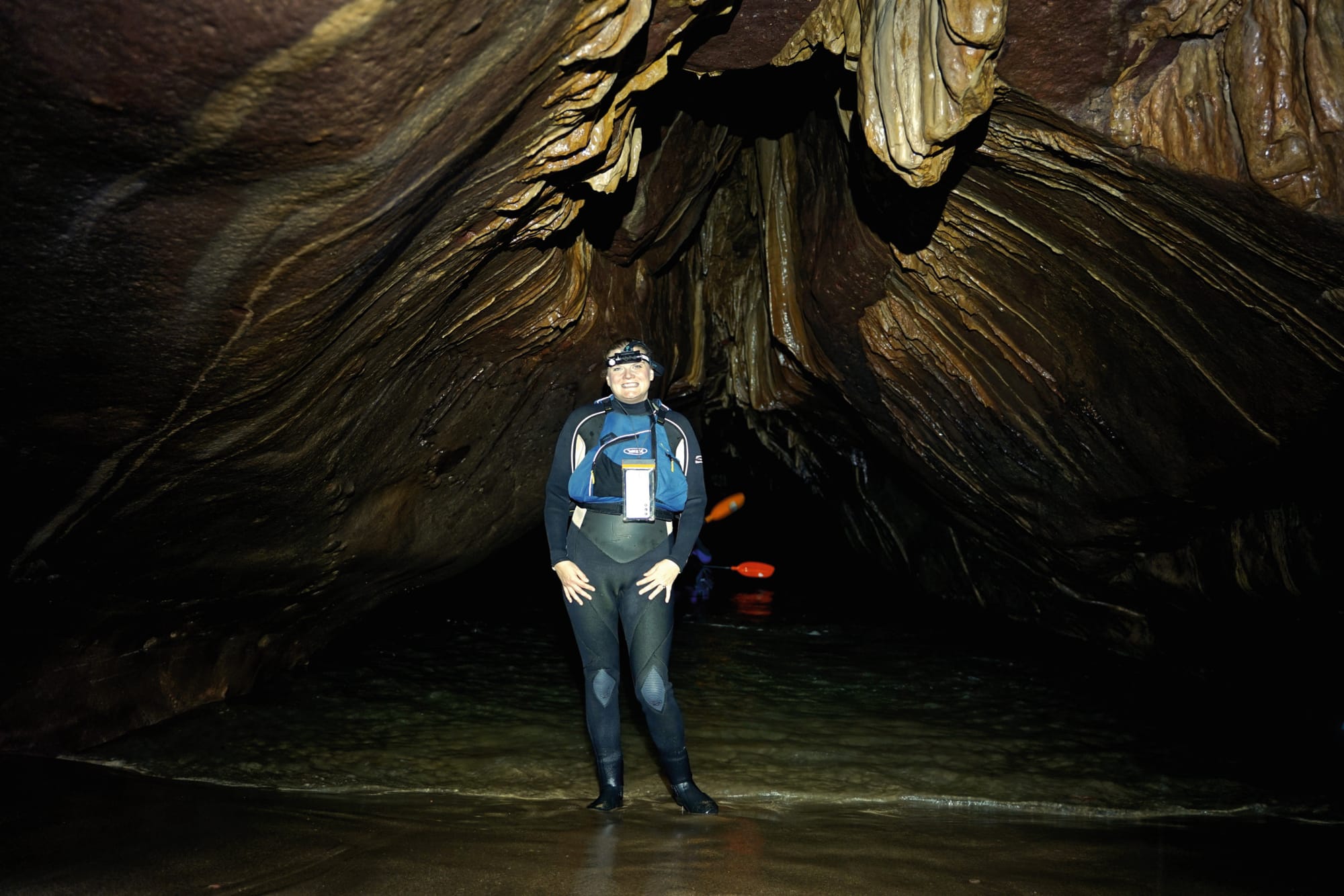
I had expected the cave to give off creepy vibes, yet it was strangely peaceful, knowing you are standing within such ancient rock, under a clifftop path on which millions of people have walked before, completely oblivious to the wonders below.
Mermaid’s Kirk and hidden gems
We soon exited this cave and visited another, longer one before we headed through a cliff tunnel to one of the highlights of the tour – a stunning beach area called Mermaid’s Kirk.
It felt so secluded here, it would be easy to forget you were just a short walk from the car park. Cam has been coming here since he was a child, swimming and jumping into the water with his friends.
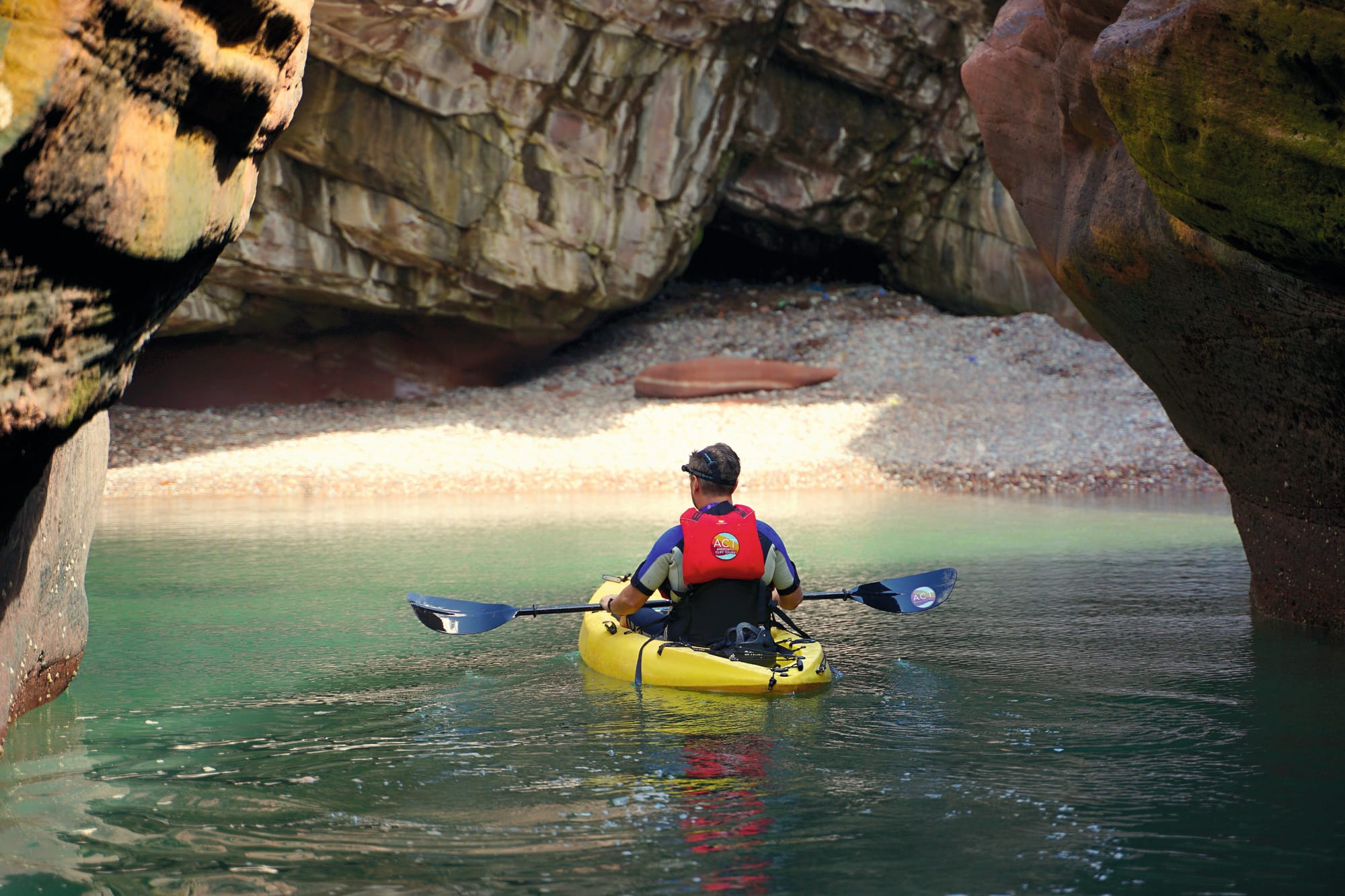
If you’re steady on your feet, the Mermaid’s Kirk is accessible from the path on the clifftop, though some scrambling might be involved.
I could have spent all day here, relaxing in the sun in this idyllic spot, but back in the kayaks we went to explore more tunnels.
Amazing rock formations
We also saw a rock formation shaped like the head of King Kong, and an abandoned cliff house with the remains of a rope ladder leading to it.
I asked Cam what was his favourite out of all the tours he offers. “You can’t beat the kayak tour,” he said. “Adventure, adrenaline, peace, dolphins, cliff jumps, fun; it really has it all!
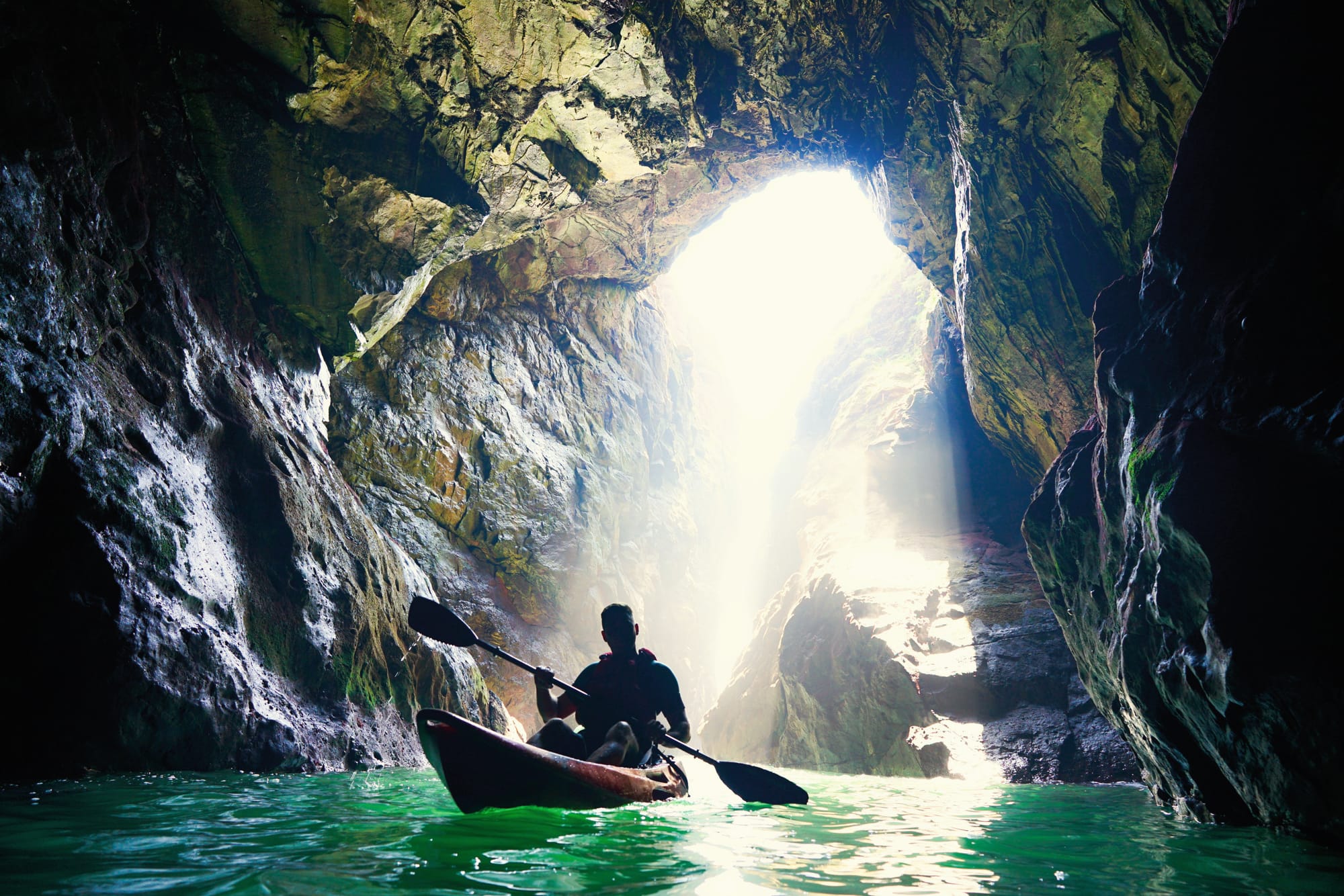
“There’s nothing better than people turning up to your hometown who have never been here and showing them how incredible our coastline is,” he added. “Seeing people excited and happy is the greatest reward.”
Seeing the cliffs from the sea
When it was time to start heading back, Cam took us further out into the North Sea so we could see the cliffs from their most dramatic angle.
Spotting dolphins here isn’t uncommon, but unfortunately no snouts popped out of the water to say hello to us this time.
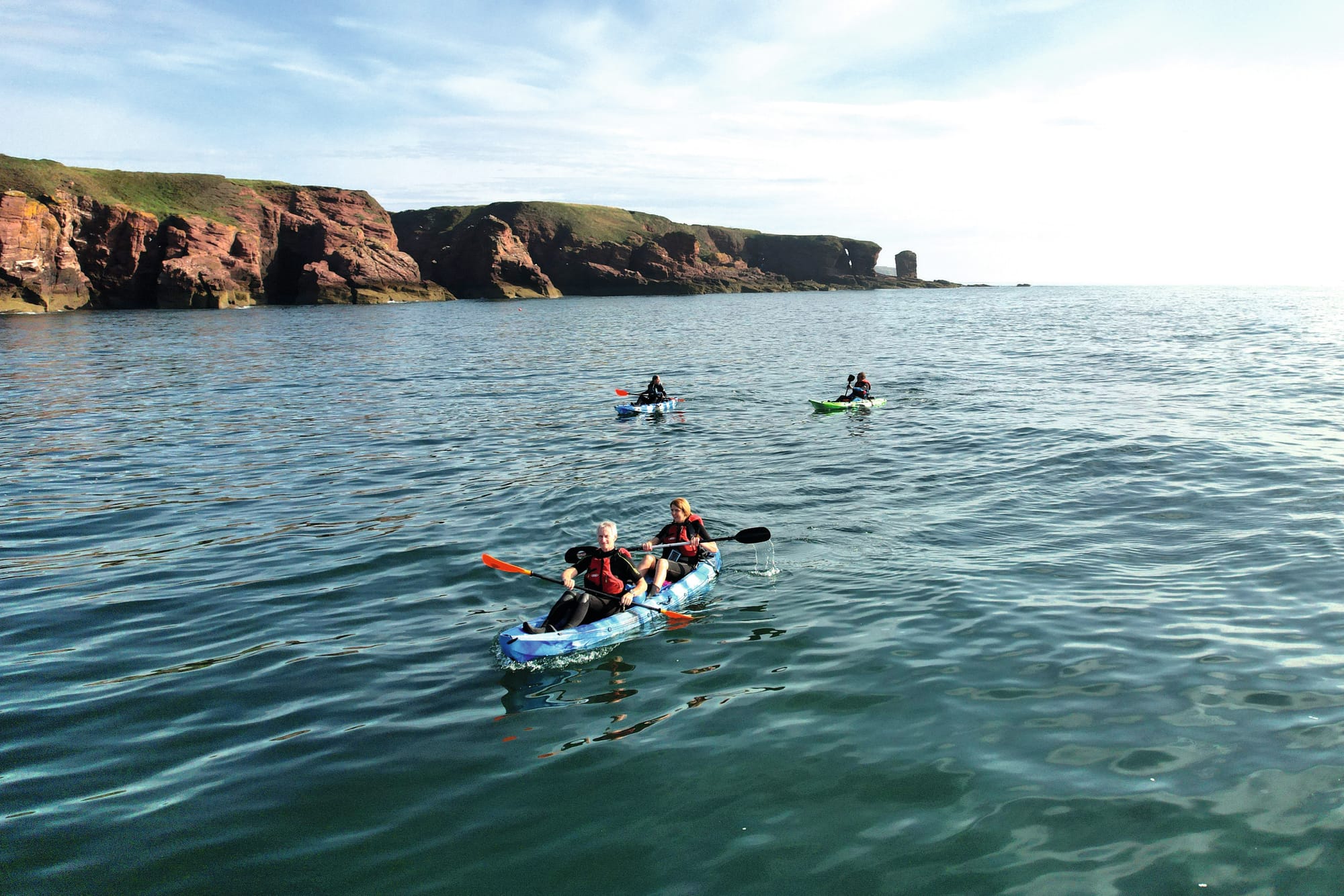
All too soon it was over and we were back to the starting point – a bit wetter and with aching muscles unused to paddling – but blown away by the whole magical experience.
Who knew that such beauty was so close to home?
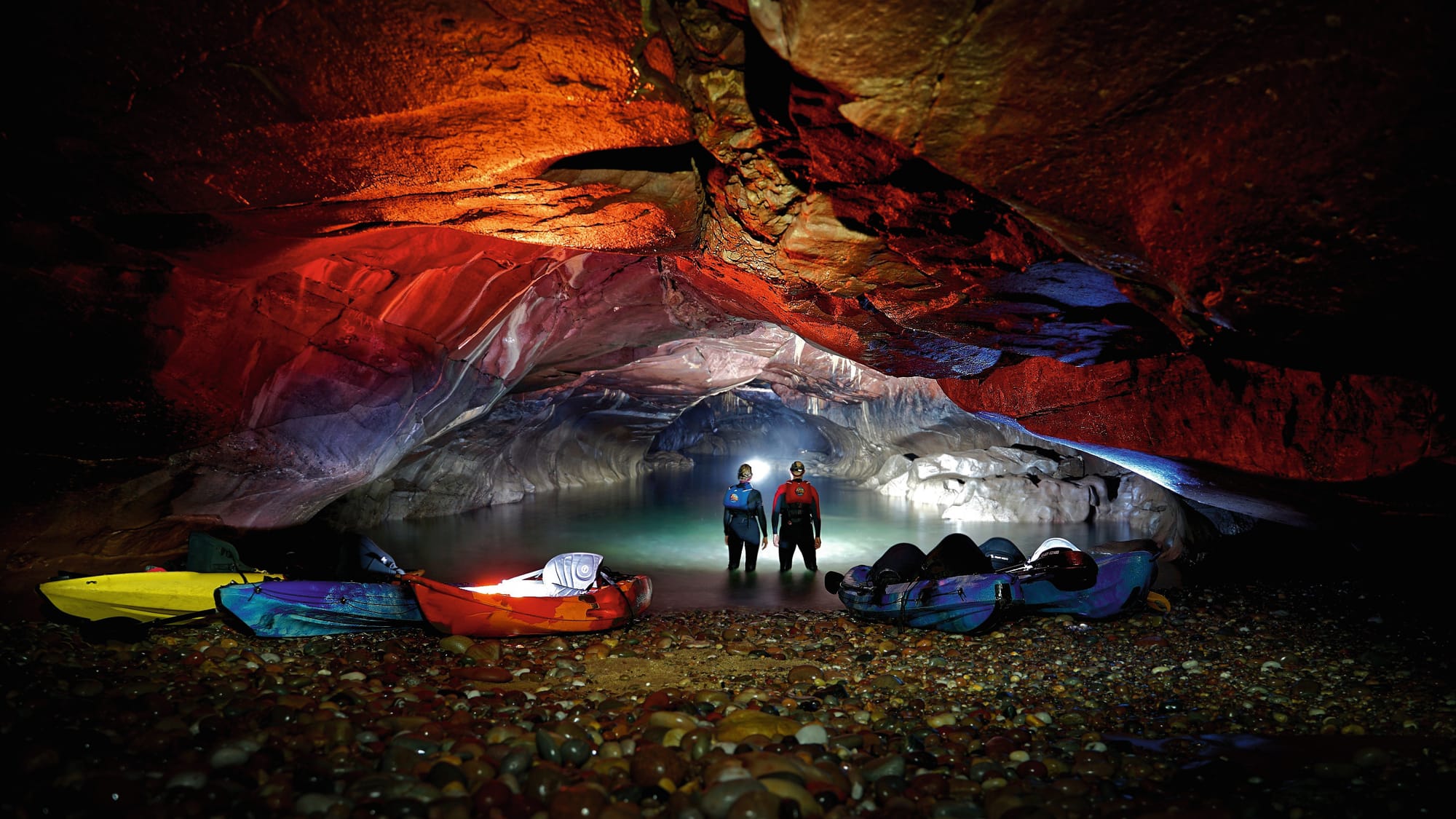
Inside The Caves
Cam took us to 5 different caves during our three-hour kayak tour.
Stalactite Cave: Over 300ft long and full of magnificent stalactites, old carvings and sea anemones, plus a giant rock shaped like a thumb. This cave fills with water but can be visited at very low tides on foot.
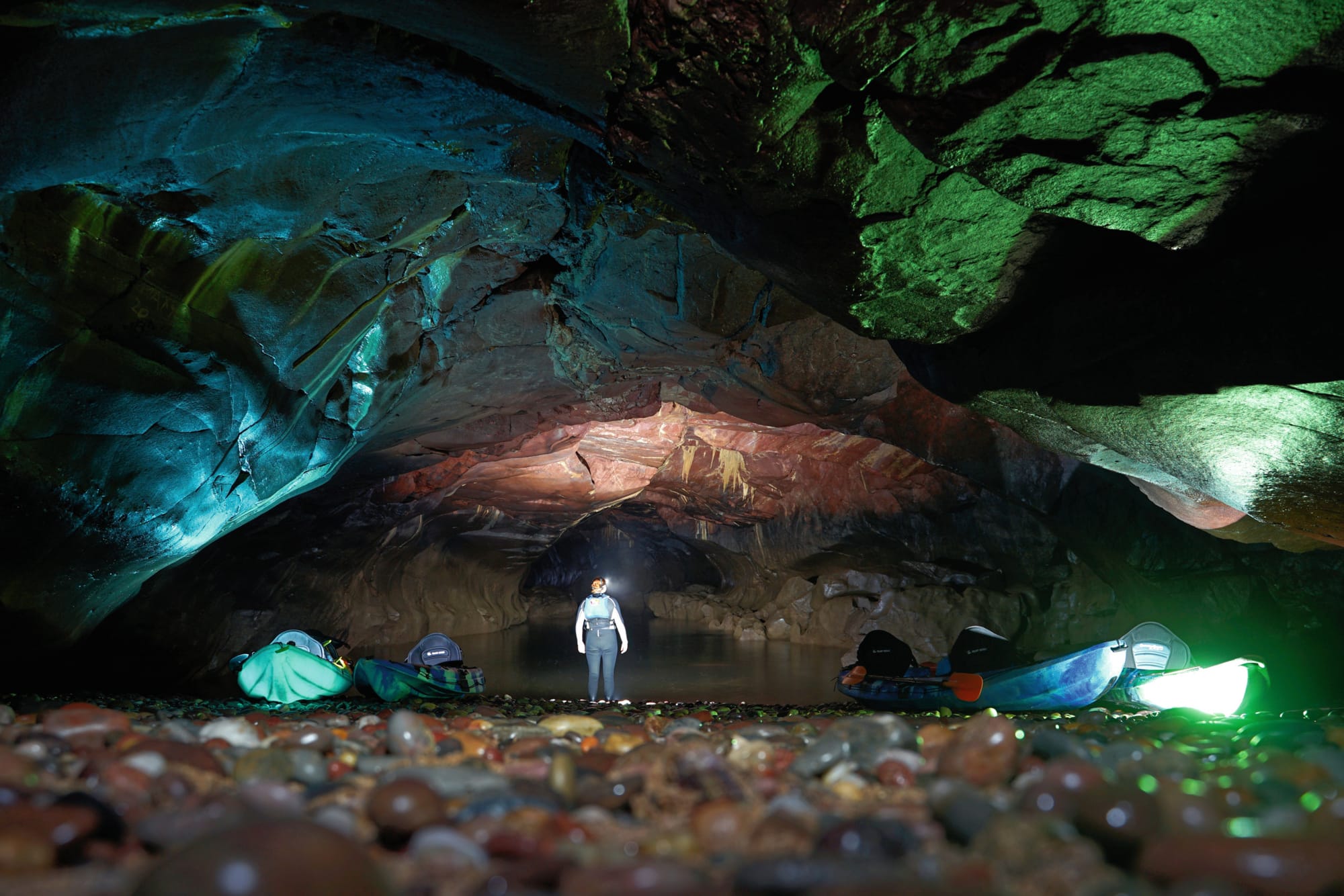
Moby’s: 350ft long with a sandy beach at the end. “The most dangerous cave at the cliffs,” Cam said.
Bunker Cave: Approximately 450ft long. The cave opens up to a giant cavern that leads to a secret underground beach deep under the farmer’s strawberry fields.
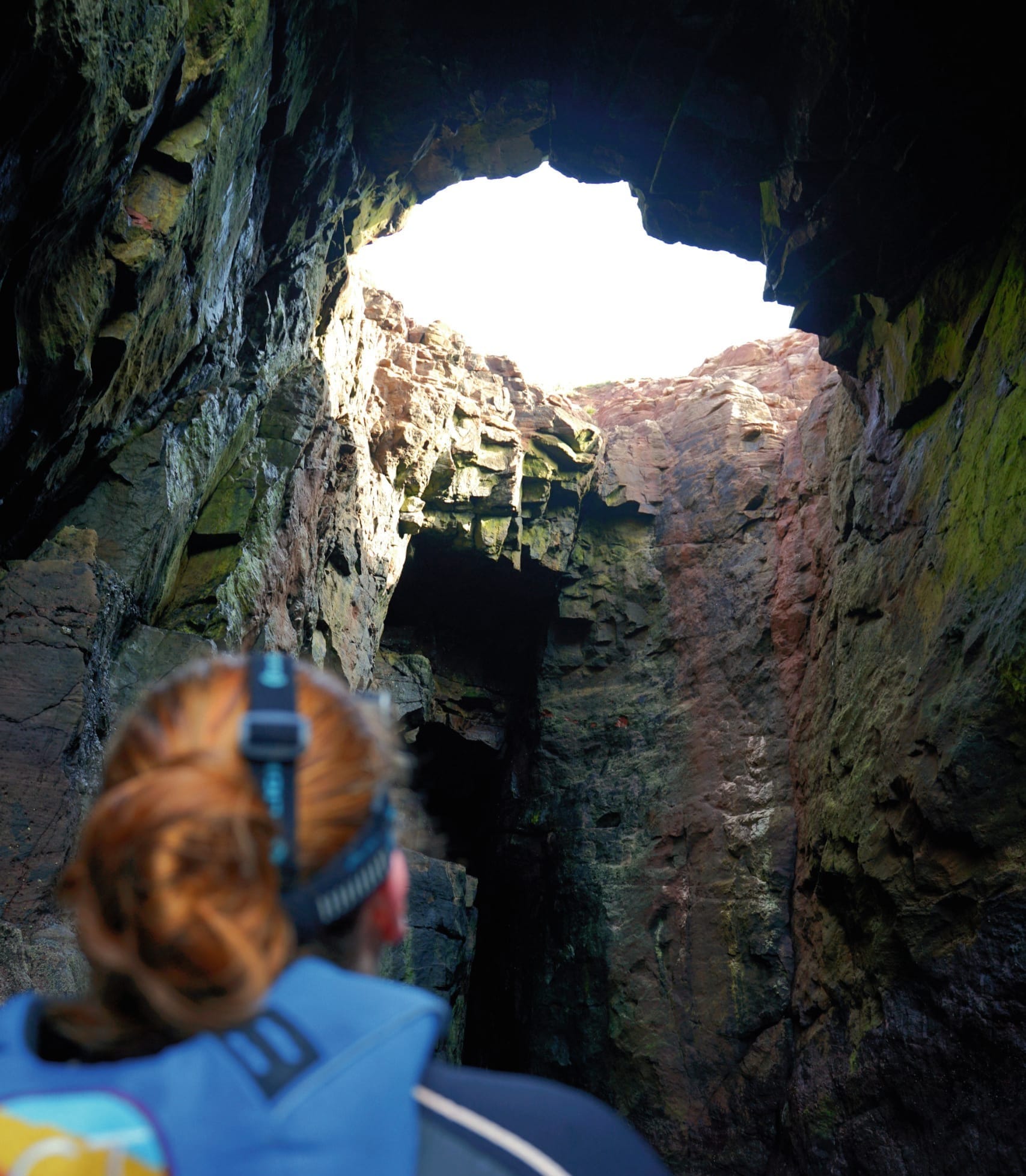
Smuggler’s Cave: The main cave used for illicit smuggling in the 18th century.
The Blowhole: In rough weather, 50ft-high plumes of water can blast out of the Blowhole.
For more information, go to Arbroath Cliff Tours.
The North Sea can be dangerous – make sure to follow safety advice.
📸 Arbroath Cliff Tours
Scots Snippet
Word of the Week

"Burn"
(n.) - a small stream or river.
From wee burns to enormous lochs, the Scots language has unique words to celebrate water across our landscapes.
Head to our Instagram for inspiration for your own Gallivants!



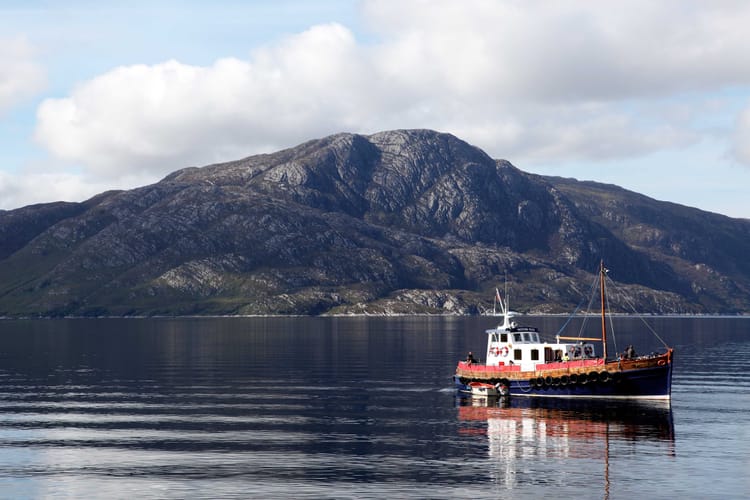



Member discussion